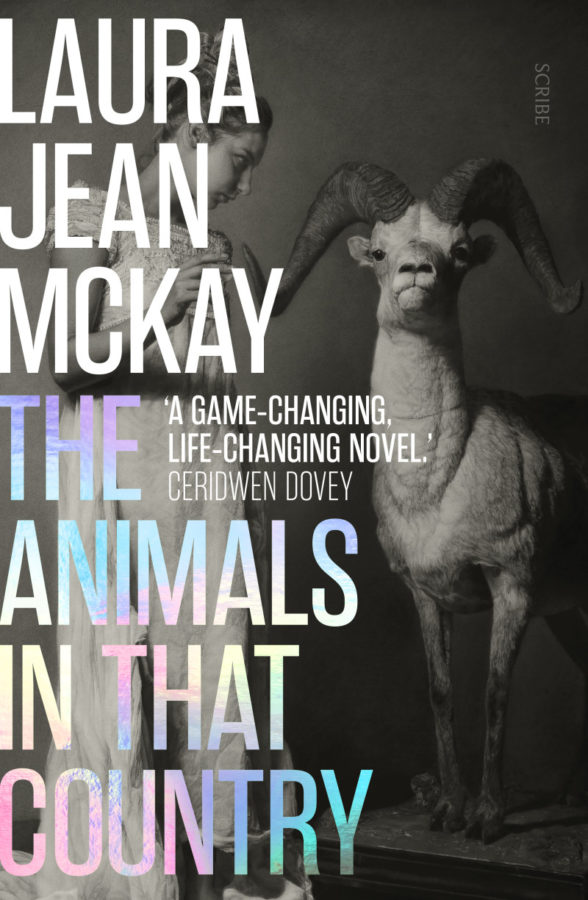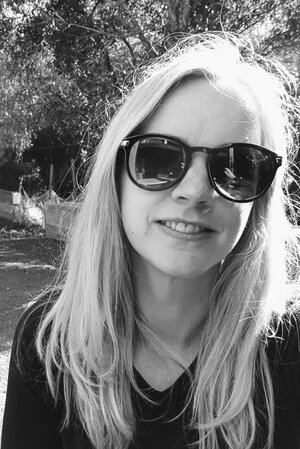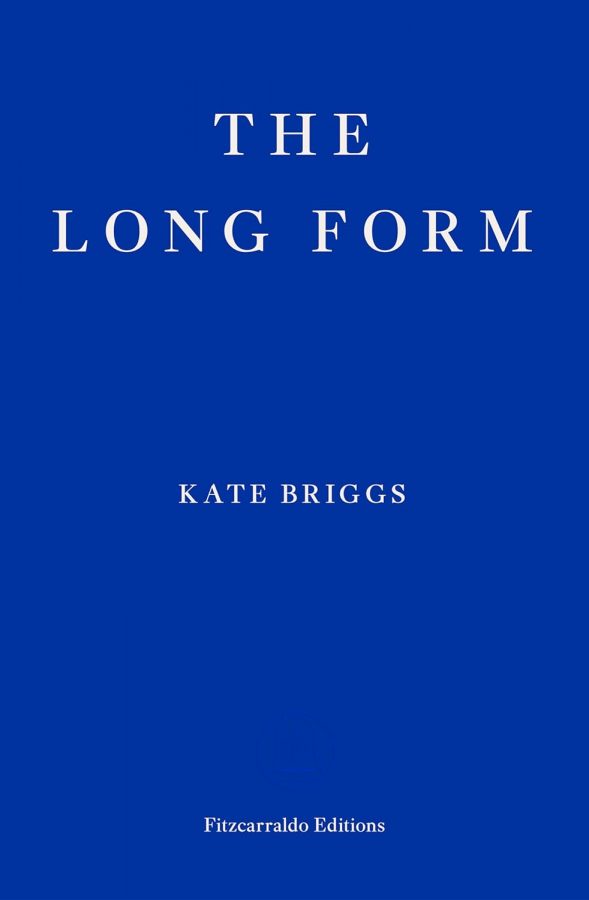The Animals in that Country was published in March 2020. It might be tempting to see the timing of publication as serendipitous, or portentous, depending on your perspective. A novel about a ‘zoanthropathic’ super-flu precipitating wholesale social breakdown, published in the panicked first months of a zooanotic global pandemic. But Laura McKay’s novel, despite its timeliness, is not so intimately tied to the current moment – its vision is broader, and far more interesting. In this particular apocalypse, the foundational threat to human social structures is the emergence of unprecedented insight into the non-human world.
One of the most important tasks for a writer of speculative fiction is to establish convincing and internally consistent parameters for the subject of their speculation. McKay’s is a simple proposition, but one with profound and fascinating implications: what if a virus could give humans the ability to communicate with animals? To understand the messages conveyed by their calls, their movements, their scents? Her answer – the fallout she envisions – is not only convincing, but deeply unsettling. Do we really want to know what the pigs we cram into cages away from sunlight are thinking? Do we want to understand the wrenching horror of mice bred in their thousands to be killed? Do we want to know what the animals we keep close to us, bound to us for their sustenance, actually think of us? It would be difficult to own a pet, after reading this book.
McKay begins in the real world, as we know it, in a native animal park in north-western Australia. Jean Bennett works as a guide, having failed the written test that would enable her to become a ranger, and she’s a popular one, cracking a steady stream of jokes to entertain the tourists. The park is managed by her former daughter-in-law, Angela, who is the mother of Jean’s beloved granddaughter, Kimberly. Angela doesn’t approve of Jean – not her laxity, her unreliability, her alcoholism; not the way that she entertains the guests by speaking ‘for’ the animals, doing the voices of wallabies and dingoes and birds. ‘You know what it says in the manual?’ Angela asks her. ‘It says people who anthropomorphise tend not to read cues, and people who don’t read cues are dangerous. Dangerous to themselves, dangerous to the animals, and dangerous to visitors.’
Jean is dangerous, in a way – it’s her failure of responsibility which leads to Kimberly being taken away from the park by Lee, Jean’s son, on a pilgrimage to visit the southern right whales. It’s arguably her naïve trust in her son that brings the zooflu into the park in the first place. McKay introduces the novel’s central conceit with a wonderfully light touch – some ten pages in, we have a brief exchange about ‘that flu’, and rumours of eco-terrorists breaking into zoos ‘down south’. And twenty pages on: ‘The news on the muted TV shows army guys and empty farms and stockyards. Beasts out where they shouldn’t be, roaming all over the roads, getting into everything.’ Jean logs on to her ‘socials’, trolling posters on social media, inviting and creating conflict wherever she goes. One of her targets mentions ‘zoanthropathy’, and she looks it up.
‘The disease is very high in morbidity and very low in mortality. Infected humans appear able to communicate (encode) and translate (decode) previously unrecognisable non-verbal communications via major senses such as sight, smell, taste, touch, and sound with non-human animals. Zooflu is also referred to as “talking animal disease”.’
‘Talking. Animal. Disease.’ Try to share the hell out of that but I’m pretty much banned from the internet. Talking to myself.
It’s not long until the zooflu makes its way into the park, infecting first Kimberly, then Angela, the other guides and rangers, and finally Jean. She’s been talking to, and for, the animals for years. As Angela astutely observes, ‘You’re happy about all this. You want to be able to talk to them. Remember your priorities, Jean.’ But remembering her priorities is not something Jean excels at – give her a bottle, or a burly, barrel-chested man, and she’s liable to forget them for at least a little while. It’s only Kimberly going missing that shocks her into action, propelling the narrative out of the park and onto the road.
We meet Sue, a crossbred dingo rescued by Jean as a pup, in the novel’s opening pages, before we have any intimation of what’s to come. She’s stuck in the fence of her enclosure and Jean breaks the park rules, climbing in to free her and receiving a bite for her trouble. Jean’s relationship to Sue will ultimately form the core of the novel, and it’s a complicated one: an admixture of affection and ambivalence, at times a power struggle, at others a profound union. Jean is addressed by turns as ‘Queen’, ‘Mother’, ‘Yesterday’, ‘Bad Dog’. Sue’s tragedy is that she lives between two worlds, her connection to humans separating her from the wild dogs, when the wild in her is always calling. She is, like the other animals kept in captivity, all ‘fucked-up’.
I can see the wild in her. She looks and acts like any dog. […] Then the dusk comes and she lifts her neck and howls the saddest song in all the world, and there’s that wild. […] Tell me that’s not special. Tell me she doesn’t know something about the world that you and me haven’t ever thought of.
When the zooflu reaches the park, Lee frees Sue from her enclosure, and it’s Sue who comes to get Jean after Kimberly goes missing.
Her body sings a picture of Kimberly. The bruises on the girl’s scrawny legs. To Sue, Kim stinks like the freckles not yet appeared on her skin, like the wee that will need to happen in an hour, like the washed sheets she slept on, and the sting of adventurous fear when she took Lee’s hand.
Jean is nursing last night’s hangover, stunned into apathy by her granddaughter’s disappearance and her son’s betrayal, but Sue won’t let her be. She harangues Jean, insistent, to do her job: to protect her pack.
Once the world is built, the conceit established, the success of the novel hinges on McKay’s ability to see her proposition through: to find a way to translate the language of the animals onto the page. And this is what makes her book remarkable – she performs this translation with originality and deftness, doing her own kind of ‘encoding’ and ‘decoding’ to create a series of authentic and ingeniously imagined voices. It takes some time for Jean to understand Sue, to parse the meanings of her particular dingo language – how every part of her, from her sounds and movements to the ripples in her fur and the permutations of her scent, combine to convey a message. Before she leaves the park Kimberly displays a talent for it, an instinct for interpreting the phrasing peculiar to each species. She and Jean are holed up in Jean’s house on the row, listening to the rescued animals who live in Jean’s backyard – her ‘sanctuary’.
The wallabies, and wallaroos bouncing about in the weird green light. The voices off their backs, out of their tails. Calling,
Happy isn’t
happy. Happy
isn’t the only happy.‘Don’t make much sense, do they?’
Kim turns her red eyes on me, head to the side like she’s one of them. ‘Yeah, they do.’
‘You can’t get any meaning out of that.’
‘Yeah.’ She pulls the towel off her face and juts out a tiny, exposed ear.
The bosom is
a plot
between the feet and the
ground.‘They’re saying they’re safe when they’re bouncing. They like to be up in the air.’
When Kimberly is gone with Lee, Jean only has Sue – and so together she and the dingo take off, tracking the journey of their shared ‘pack’ through the desert to the southern coast.
Outside the park gates zooflu has wrought chaos, with self-appointed Land Patrols acting as a kind of citizen police force. Along the road communities have shut themselves up away from their pets or killed them; even, in one chilling case, locking them away to starve to death. To be in the company of a ‘pet’, as Jean is, is to be regarded with suspicion, and the threat of violence is ever-present. The humans in McKay’s novel tend to divide along two lines. There are those motivated by compassion, who let their pets go or break into zoos and farms, freeing the animals, and those who are terrified, filled with hatred, resisting the implication of equality with creatures they’ve long treated as their subordinates. Jean is not entirely one or the other – she’s compassionate, not cruel, but it will take the course of the novel for her to understand that she has no inherent right to dominance over Sue.
It is the impact of human domination, the queasy horror of our maltreatment of other species, that produces some of the novel’s most compelling set-pieces. In the food store at the park mice in their hundreds wait to be gassed and fed to the other animals, screaming ‘bloody murder, the death of everyone, death in the cages and death in the walls’. On the road, Jean frees a load of factory-farmed pigs on their way to the slaughter:
The pigs clatter past me down the ramp, fucked-up eyes on the road ahead, calling,
Hello
is it more.Those animal nutters were wrong, but not in the way I thought. It’s not the same as the Nazis: that was us doing to us. What’s this?
Cows in the field wait to be milked, confused and filled with longing, unable to comprehend where the calves borne of endless pregnancies have gone.
The side effects of zooflu, we learn, are usually progressive: first mammals, then birds and finally insects – although some sufferers, like Angela, possess the ability to communicate with birds or insects straight away. Out on the road Jean sees the appalling consequence of this progression, encountering people who have descended into madness as billions upon billions of voices became impossible to quiet. Some of the infected have resorted to amateur trepanning to let the pressure out; others settle for getting themselves drunk on cough syrup, which dulls the chorus for a while. Not surprisingly, given her track record, this remedy has its appeal for Jean. But there are other possibilities – those who see the potential of the virus. A different kind of response is offered by a nurse at the hospital Jean visits in her desperation. ‘All the noise you’ve made whinging here,’ he says to Jean, ‘Yes, whinging and whinging out your mouth, instead of shutting up enough to let your ego explode. Have it rebuilt by a bird, an ant, a dingo.’
When we’re not hearing the language of the animals – at least as Jean understands it – we’re with Jean herself. Her voice is distinctive, elegant in its punchy, blunt rhythms. Colloquialism and vulgarity combine seamlessly with visceral, vivid and often startling imagery. If there’s a flaw in the novel, it’s a human one: a key betrayal that did not seem to me to be entirely convincing. But it’s a small quibble – certainly Jean, frustrating, pig-headed and unreliable as she can be, is a compelling protagonist, and if sometimes I wanted her to get out of the way so that I could listen to Sue, that’s its own testament to McKay’s skill.
The culmination of Jean and Sue’s journey comes when they reach the southern coast, where the right whales are passing on their annual migration. This is where Lee has been talking about going since he arrived at the park, and it’s where he takes Kimberly.
‘There’s other animals, isn’t there? Mammals that aren’t domestic, and they’re not in jail, they’re wild and free. They’re singing. Refrains. Repetitions. Notes you can’t hardly hear. Deafening choruses. Songs so sad and so happy those words don’t even begin. Can you hear it?’
It’s a site of pilgrimage, when Jean finds it, filled with people from all walks of life who are following the same instinct as Lee – to communicate with the freest, most enigmatic of mammals. They’re the beginning, and the end: our beginning and end, and McKay’s imagining of what they have to say to us is pitch perfect in its blend of allure and menace.
There’s no simple or easily digestible message here about the relationship between humans and other animals, and it would be a disservice to the novel to look for one: that if we treat them well our pets will love us; or conversely, that we are born into dominance and must exercise it. Animals have their own perception of their world, and their own principles for understanding and navigating it. If McKay is telling us anything, it’s that we would do well to recognise the substance of these.
Sue’s rules are full on, but they’re real. She throws them down her tail at me while we walk along. I have to watch for them, careful. Unless others aren’t as good, succumb to others. The other can get better quickly so watch, in case it needs to bow. Don’t take other’s foods, others can’t take from it. If it eats dogs, be secretive Encourage each other. Let each other feel all the time. (Carry) a message with its anus. Pay particular attention to dirt and wind. (Enjoy everything.)







